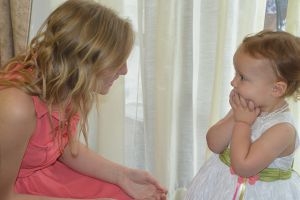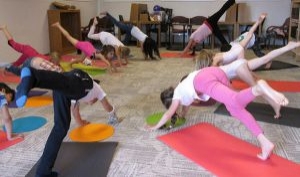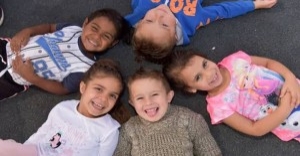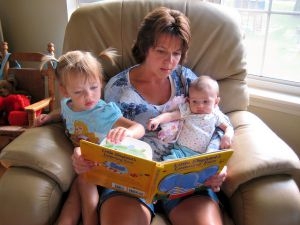Open ended questions cannot be responded to with one word answers such as yes or no. These types of questions enables a child to provide a more detailed response and encourages a child to stimulate their thinking and develop their language skills. Open ended questions supports a child to focus and make meaning of their experiences and enables them to see various possibilities.
Benefits of Open Ended Questions
While engaging in conversation and you ask a child open ended questions, it shows that you are interested about what they are doing. Open ended questions encourages a child to:
- develop their language by using different words and a wider range of vocabulary to answer the question
- provide more information and details
- express their thoughts, ideas and opinions
- be creative
- develop positive relationships by engaging in meaningful conversations
How to Ask Open Ended Questions
During the day, it’s important that we ask questions to children, about their activities and every day encounters. Using open ended questions, can help a child to grow as they begin to think about how they approach, plan, carry and extend upon their own ideas. To encourage a child to think about their learning and to develop their language skills, the following open ended questions can be asked:
- Tell me about what you’re doing?
- Why do you think…?
- How do you know…?
- Why do you think this happened?
- What will happen next?
- How did this happen?
- What can you do about it?
- What do you think would work?
- How do you think it could work?
- Can you do it another way?
- How are these the same?
- How are these different?
- What do you think comes next?
- What else can you do?
- What does it remind you of?
- I wonder why…
- Why did you…
- How did you do that?
- Show me how you…?
- Tell me about…
- Is there another way to….?
- Why do you say that….
While answering open ended question a child needs to have a particular level of verbal skills. This is because open ended questions have a variety of different possible responses. You don’t know what the response is going to be. A child would more eagerly answer if they are able to effectively communicate and know a range of vocabulary.
Questions to Challenge Thinking
Challenging children to think by asking thought provoking open ended questions can expand and enrich a child’s cognitive, creative and language development. Open ended questions that challenge thinking include:
Making Predictions – What do you will happen...
Extend on Thinking – What would happen if there were...
Consider Consequences – What would happen if you jumped and I wasn’t there to catch you?
Assess feelings – How would you feel if that happened to you? How do you think ... feels?
Similarities and Differences – How are these the same? What makes these go together? What make these different?
Solving problems – What could you do to...
Evaluate – What made you decide...
Using Open Ended Questions With Books
The best way to begin getting into a habit of asking open ended questions is starting off with asking questions on a book. It will be interesting to hear what a child thinks that the story may be about and it will be a great insight into what a child’s thinking and creativity is. Here are some ideas on what types of open ended questions to ask during the story.
- Front Cover – “What do you think this story is about” - Using the clues and observing the picture on the cover of the book as well as the title of the story, children will begin to make predictions of what the story is about.
- Ask Questions – “What do you think will happen next?” “Why did that happen” “Where do you think they would go” etc. The questions asked should be related to the story. You could prepare the questions beforehand by adding sticky notes with the questions to the pages. This will help you to know what types of questions to ask in order to get the children to share their thoughts and ideas.
- Second Reading – During the second reading you can begin asking questions to help the children relate it to themselves. “What will happen if the wolf came to your house”, “What would you do if you found some magic beans” etc.
Using open ended questions while reading books provides an opportunity for a child to express their ideas and opinions and share their reasoning and thought process.
Tips and Strategies For Using Open Ended Questions
Combine Closed Ended and Open Ended Questions together – to begin you can use closed ended questions at the beginning of the conversation and then use open ended questions to expand the child’s language, thoughts and ideas. For e.g. “Have you been to the circus” (closed) “What happened when you were there”(open). “What did you like watching at the circus” (open).
Use encouraging words – when asking open ended questions try to avoid questions such as “who” e.g. “who knows how to draw a lion” rather rephrase this to “What are some ways that a lion can be drawn”. Encouraging phrases enable children to collaborate and learn from each other.
Don’t expect a specific answer – with the questions you ask try and not to expect the “right” answer. For e.g. “What colour is the sky” if a child was to answer “orange” don’t dismiss it because they didn’t say blue. Continue questioning “Why do you say that” child can respond “When the sunsets in the evening”. If you begin asking questions for specific answers, children will be able to tell that you’re not interested in their thoughts, ideas and opinions and will become less engaged.
Give a child time – a child may need to get familiar with these types of questions and require time to answer these in more complex ways.
Practice – use open ended questions as part of your practices. Obtain a list of generic open ended questions that you can see during your interaction with children as a reminder of what questions to ask.
Open ended questions provide children with a sense of belonging and supports and develops relationships. It shows a child that we are eager to hear their ideas, enable them to think for themselves and contribute to their own learning.
Reference:
- Dodge, Diane Trister, Colker, and Laura J (2002) – The Creative Curriculum for Preschool, Washington D.C, Teaching Strategies
- Surchek, Katheryn – Asking Open Ended Questions
- McKechnie, Kathy & Walsh, Nancy – Engaging Children in Conversation







 Open ended questions cannot be responded to with one word answers such as yes or no. These types of questions enables a child to provide
Open ended questions cannot be responded to with one word answers such as yes or no. These types of questions enables a child to provide During your child’s preschool years, an important milestone begins to emerge. This is the development of pre-writing skills. Pre-writing skills are used to encourage, develop
During your child’s preschool years, an important milestone begins to emerge. This is the development of pre-writing skills. Pre-writing skills are used to encourage, develop Open ended materials enables children to play freely. They are objects that have no rules to follow, use or function. Raw materials that can be
Open ended materials enables children to play freely. They are objects that have no rules to follow, use or function. Raw materials that can be Language plays an important role in a child’s development. It enables a child to communicate effectively with their family, learn at school, socialize with friends,
Language plays an important role in a child’s development. It enables a child to communicate effectively with their family, learn at school, socialize with friends, Like adults, children have to deal with their own stress in life. Moving house, starting a new school, preparing for a new sibling - these are
Like adults, children have to deal with their own stress in life. Moving house, starting a new school, preparing for a new sibling - these are An Acknowledgment of the Country is a way of showing respect for the Traditional Owners and can be given by both non-Indigenous people and Aboriginal
An Acknowledgment of the Country is a way of showing respect for the Traditional Owners and can be given by both non-Indigenous people and Aboriginal Playdough is such a versatile material. It provides numerous benefits to children as they manipulate it, it is safe and soothing and provides children with
Playdough is such a versatile material. It provides numerous benefits to children as they manipulate it, it is safe and soothing and provides children with Reading aloud is one of the best kept secrets. It has tremendous impact on the child’s mind and helps them gain a good start on
Reading aloud is one of the best kept secrets. It has tremendous impact on the child’s mind and helps them gain a good start on Pretend play is very important for children's development and learning. In the house corner, children can take on and try out roles from familiar family
Pretend play is very important for children's development and learning. In the house corner, children can take on and try out roles from familiar family When children apply paint to paper, glue things together, or pound a lump of clay, they experiment with colour, shape design and texture.
When children apply paint to paper, glue things together, or pound a lump of clay, they experiment with colour, shape design and texture.



